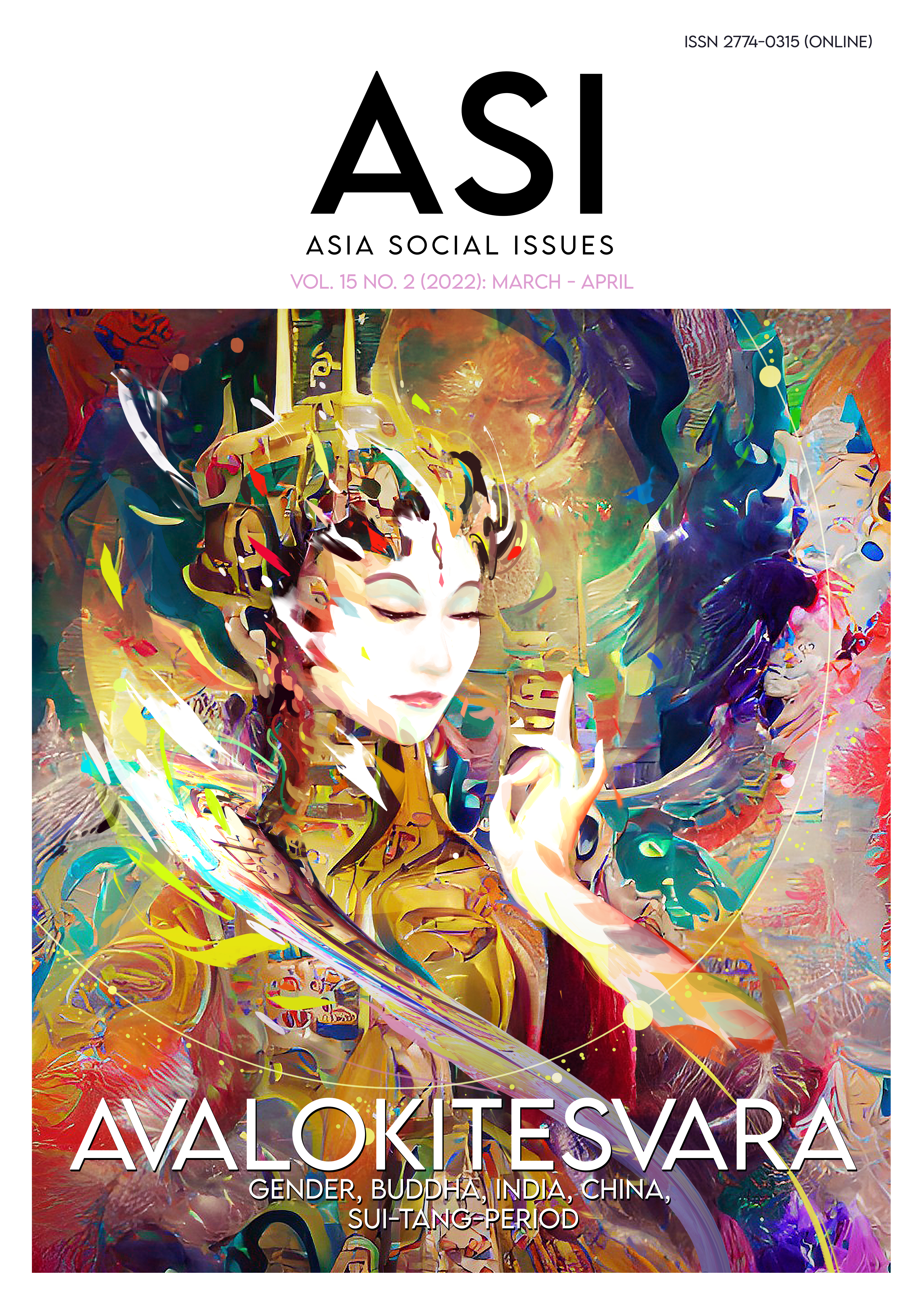The Ambiguity of the Gender of Avalokiteśvara: A Comparative Study on the Representations of Avalokiteśvara from India and China during Sui-Tang-Period
Main Article Content
Abstract
Buddhism was transmitted to China during the Han Dynasty (202 BCE-220 CE) and integrated with existing Chinese cultures such as Confucianism and Taoism. Within Buddhism itself, Avalokiteśvara, a Bodhisattva who is believed to have made a great vow to assist sentient beings in times of difficulty and postpone his Buddhahood until he has assisted every sentient being in achieving nirvana, experienced a long process of change. One of the striking changes in the image of Avalokiteśvara in China is the shifting of the gender of Avalokiteśvara. The great Sui-Tang dynasties patronized Buddhism as a state cult during the more significant portion of their reign. Many scholars like Wu Yan, Jiao Jie, Sun Xiushen, Cui Feng, etc. observed that the Sui-Tang period was the turning point for the gender transformation of Kuan-yin.[1] In this paper, I am going to do a comparative study on the representations of Avalokiteśvara from both India and China broadly from the seventh to tenth centuries, to see how Kuan-yin transformed in China and whether there might be influences from India in the ways that Kuan-yin’s gender is constructed in the iconography.
Article Details
Copyright: CC BY-NC-ND 4.0
References
Brown, R. L. (2002). The feminization of the Sarnath Gupta-Period Buddha images. Bulletin of the Asia Institute, 16, 165-179.
Changwu, S. (1996). The Weimo (Vimalakirti) and Kuan-yin in Chinese literature. Beijing, China: Beijing Advanced Education Press.
Chuanming, R. (2002). The discourse of Wu Zetian’s religious belief. China: Chinese Literature and History Monographs.
Chutiwongs, N. (2002). The iconography of Avalokiteśvara in mainland South East Asia. New Delhi, India: Indira Gandhi National Center for the Arts.
Feng, C. (2013). The reformation of Kuan-yin belief in China. Journal of Pingdingshan University, 28, 110-114.
Jiayou, W. (1990). The notes of images of Sichuan in Tang, Art of grottoes. Shaanxi, China: People’s Publishing House.
Jie, J. (2015). The feminization of Kuan-yin in Tang dynasty. China Academic Journal, 32, 102-103.
Juanying, Y. (2006). The cult of eleven-faced Kuan-yin in Tang Dynasty. Journal of Buddhist Research Center, 11, 85-115.
Pointer, B. G. (2012). The feminisation of Avalokiteśvara in China. Cardiff, UK: Cardiff University.
Saunders, E. D. (1960). Mudrā, a study of symbolic gestures in Japanese Buddhist sculpture. New York, US: New York Pantheon Books.
Shaoliang, Z., & Chao, Z. (2001). Epitaph compilation of Tang Dynasty. Shanghai, China: Shanghai Ancient Books Publishing House.
Xiushen, S. (1995). The sinicization of Buddhism in images of Kuan-yin. Dunhuang Research Journal, 1, 1-15.
Yan, W. (2015). The history of the culture of Chinese Kuan-yin. Hangzhou, China: Zhejiang University Press.
Zang, X. (2021). Da-Tang Xi-yu Ji. Retrieved from https://www.britannica.com/topic/Datang-Xiyu-Ji
Zhongmian, C. (1982). The History of Sui-Tang Dynasties. Shanghai, China: Chung Hwa Book Company.


